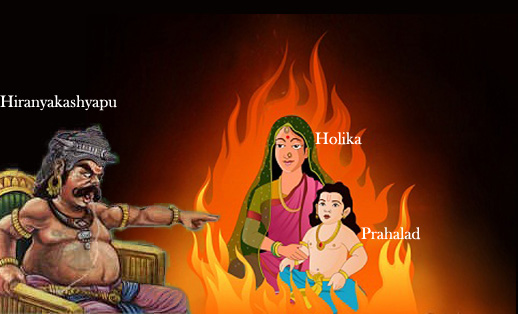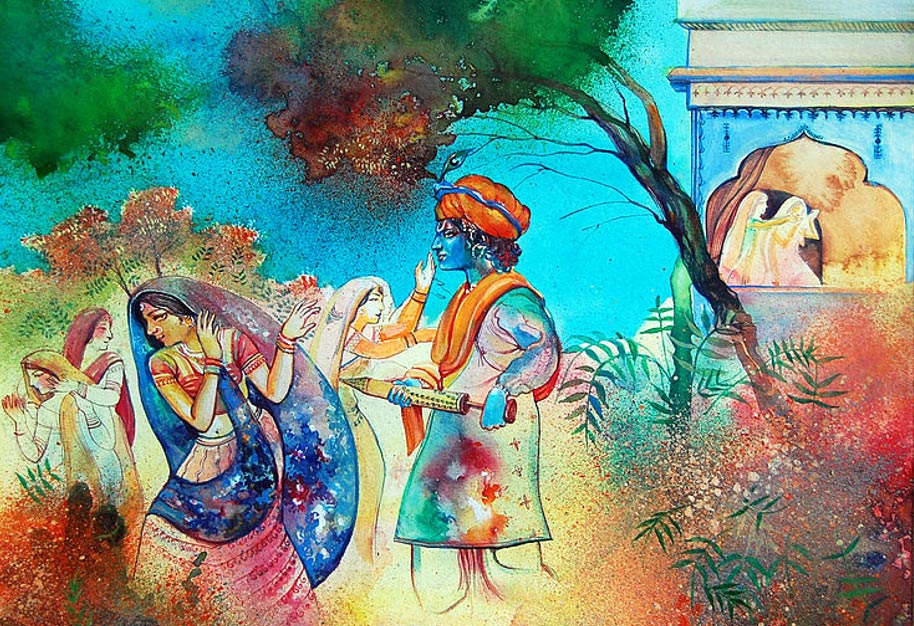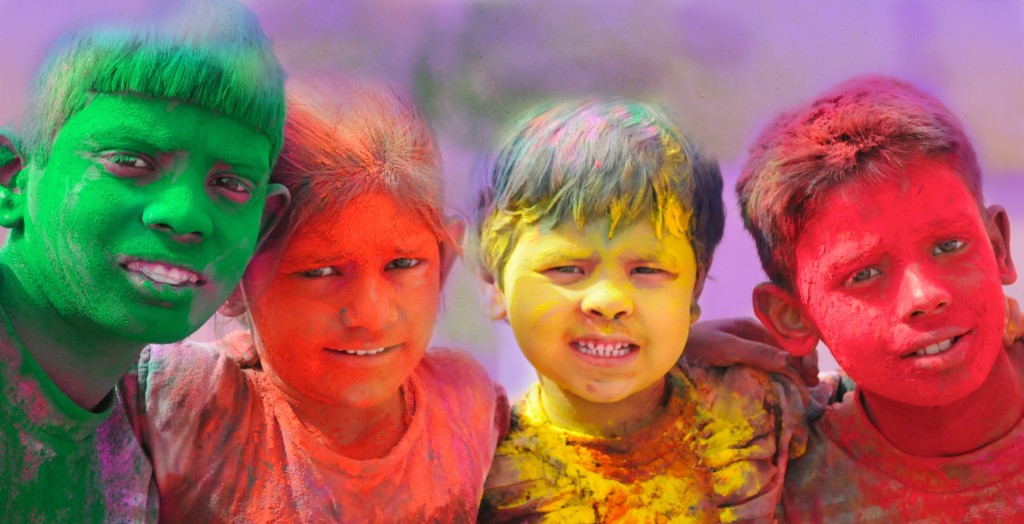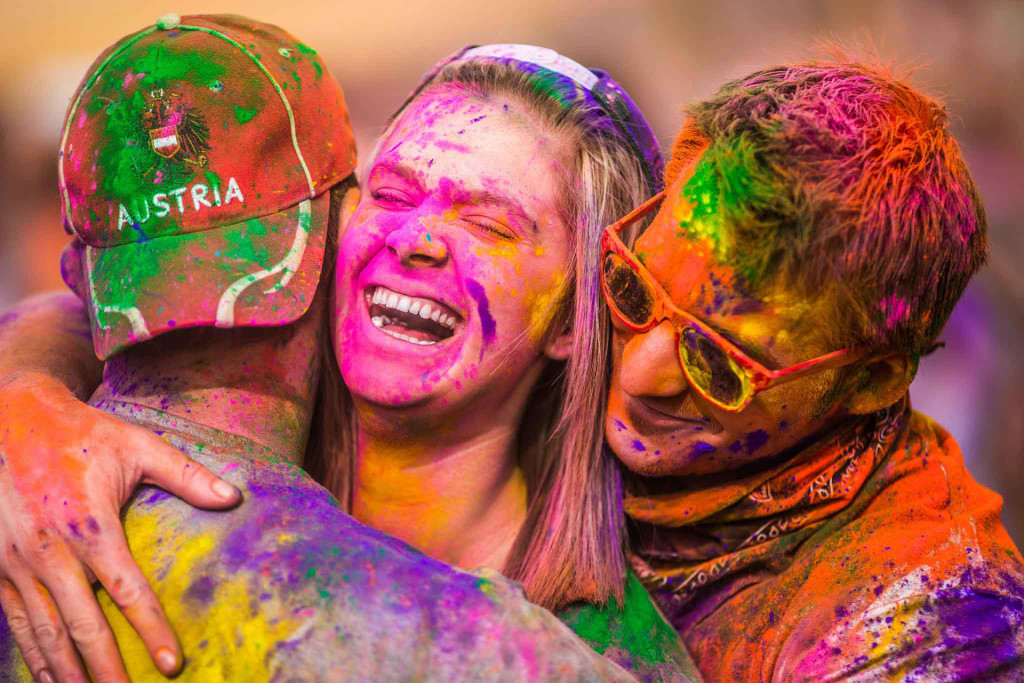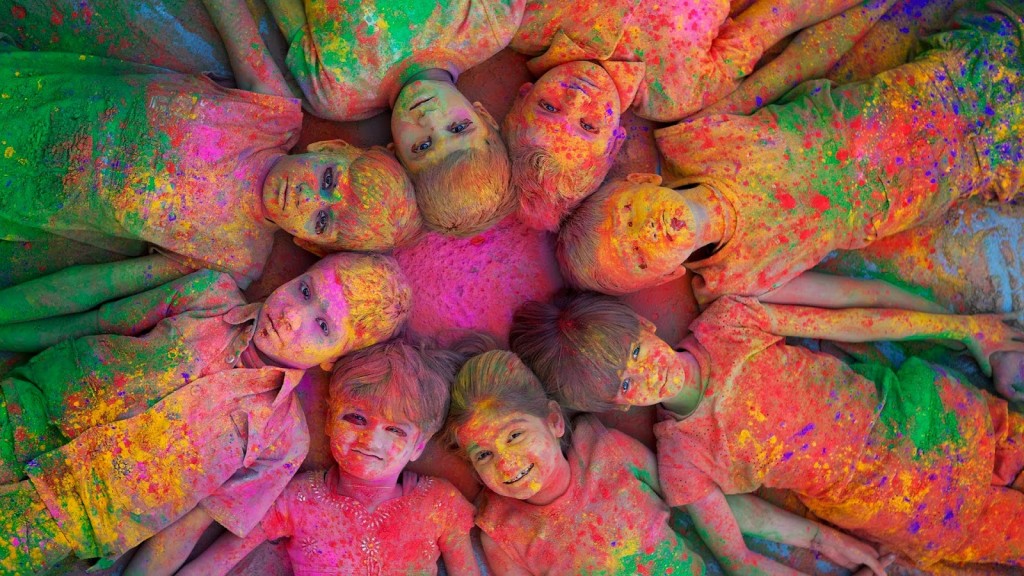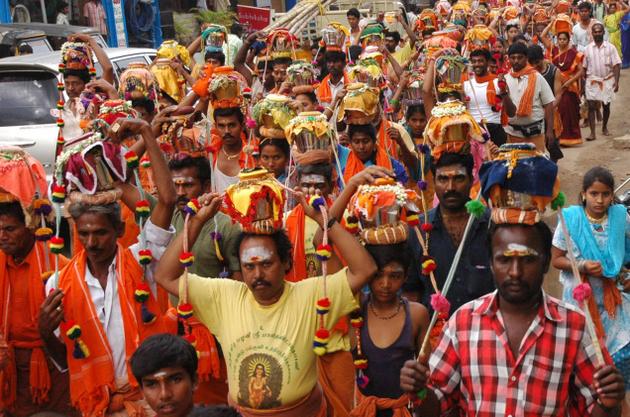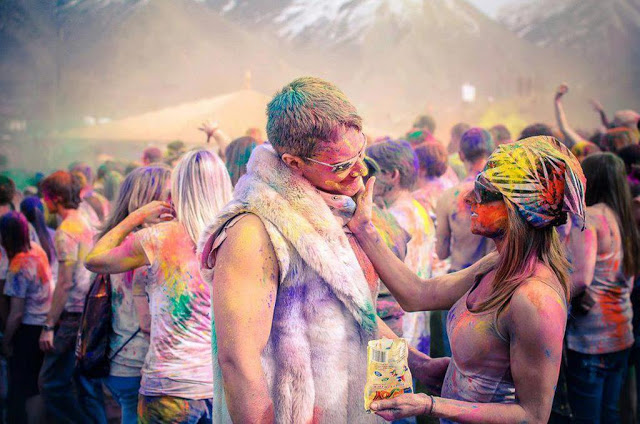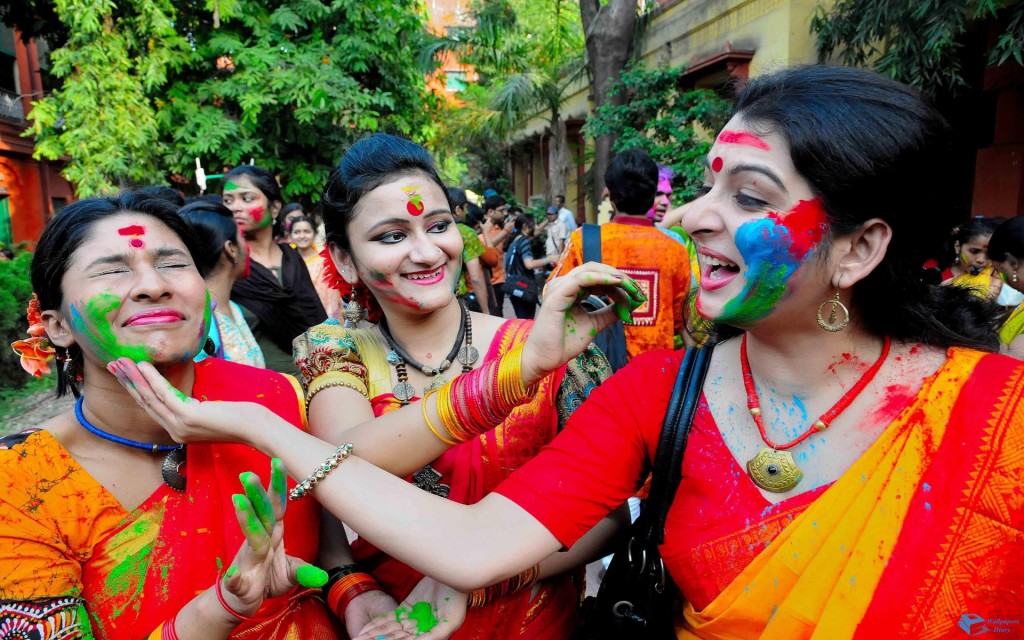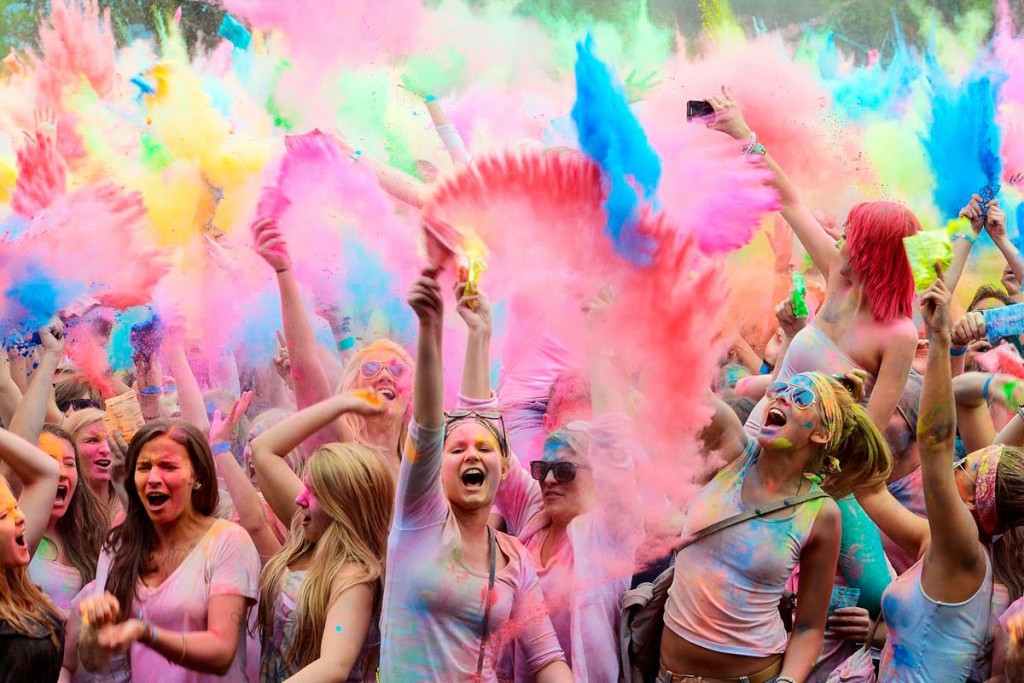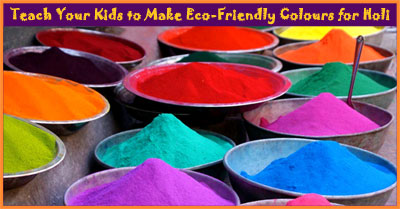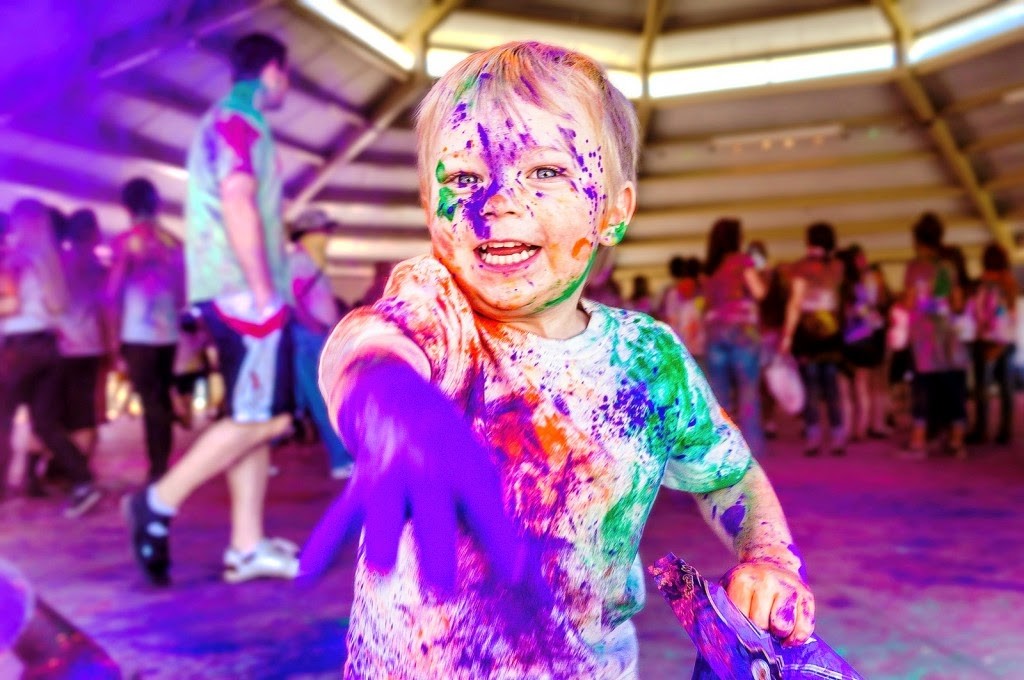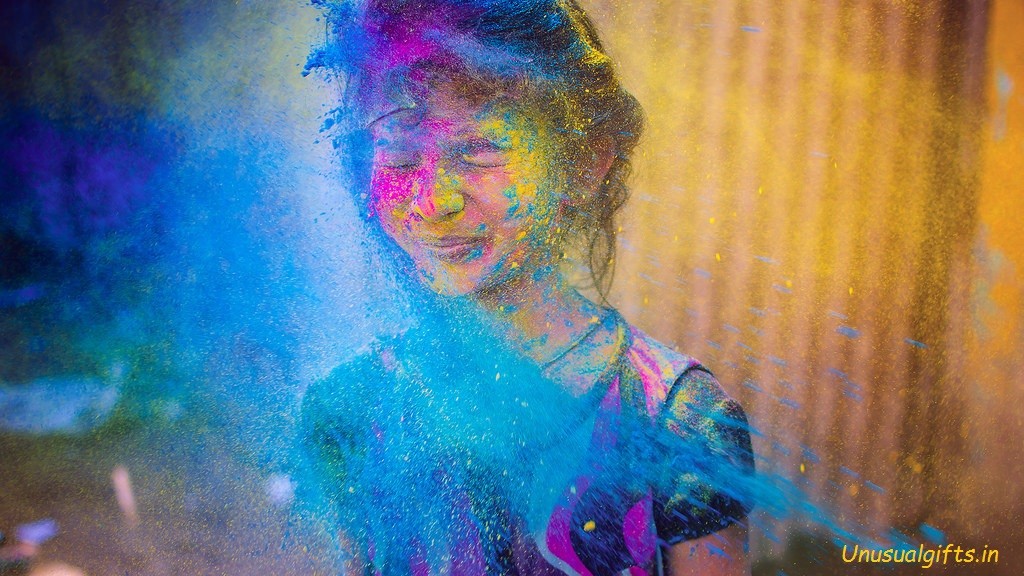Description: Many of us just see holi as the festival of colors, but there is much other importance associated with this festival. Let us gather some details in this regard.
There are many aspects related to the Holi festival that makes it the ideal celebration in the lives of humans. Even though, many of us celebrate this festival with whole lot of enjoyment gifting items to each other, many of us do not actually know the real significance associated with this festival towards cultural, religious and social aspects. When we celebrate festivals after understanding the significance they hold in our lives, the festivals will turn out to be more enjoyable and this is applicable to Holi as well without any doubt whatsoever. Let us make our kids understand the significance of this festival along with bringing the right and safe tool for them to splash colors on each other.
Mythological importance:
Do you know that Holi is a festival that takes us close to mythology? Yes, there are many legends associated with this festival of colors, but the most important of them is the legend associated with Prahlad and Hiranyakshyap. The former is the son and the latter is the demon father, who was also the ruler of his kingdom, who demanded that the people should worship him as god, but his son was opposite to his thoughts and he believed that Lord Vishnu alone is the almighty. To bring the son to his way, the father tried out different methods and finally he tried to kill his son too. So, he asked his sister Holika, who can withstand fire to keep Prahlad on her lap to get into fire, such that the child will be killed and she can come out of the fire without any difficulty. But, the extreme devotion of Prahlad towards lord Vishnu saved him and killed Holika. The tradition of burning Holika is stated to have association with Holi Festival.
Another legend stated to be associated with this festival is something connected with Radha and Krishna as Krishna was applying colors on Radha and other gopis out of extreme delight. This playful habit of lord Krishna is stated to be celebrated as Holi nowadays.
Another mythological belief states that this festival is celebrated with a view to mark the death of demon Pootana, who tried to kill child Krishna by feeding him poisonous milk.
In southern part of the country, it is celebrated in connection with Lord Shiva and Kaamadeva. It is in honor of the Lord of Passion Kaamadeva, who actually risked his life for revoking the Lord Shiva from meditation to save the world.
In addition, the day is celebrated to mark the death of demon Dhundi, who used to trouble kids in the Raghu Kingdom and was finally chased away by kids with pranks and this day is believed to be celebrated as Holi. This is why even nowadays children play pranks at the time of Holika Dahan.
Cultural importance:
When the above-mentioned mythological facts revolve around the day, the cultural significance associated with this festival is that truth always out powers the evil and the destroying of evil will take place one day. In addition, it also shows that extreme devotion towards the lord will protect kids regardless of the life-threatening situations they face in their lives.
When kids are taught about the significance of this festival, they will be in a position to learn the importance of good conduct in their lives. This festival is generally celebrated during harvest season and so it is the right time for people to feel rejoice and they can submerge themselves into the spirit of Holi.
Social importance:
Holi holds the pride of being a festival that brings society together and its social significance can be understood from the fact that it is celebrated by non-Hindus as well in India. Due to the joy associated with the celebrations, enemies too turn out to be friends by forgetting the feeling of hardships that might be present in their lives. In addition, without any differences between the rich and the poor, people celebrate the festival together with the spirit of brotherhood. It will also help with strengthening the emotional bonds between people as people visit the houses of their friend and relatives for exchanging gifts, greetings and sweets.
Biological importance:
You might be surprised to know that our ancestors have rightly identified the time of the year during which we feel sluggish and sleepy for celebrating this festival, which in turn can bring excellent biological benefits to our body. This is the period when the temperature changes from cold to hot in India and during this time, the body will take some time to adjust itself, thereby making us feel lazy and sluggish. But, when we engage in Holi celebrations we run and play loud music to enhance the celebrations, which in turn will keep us active and will rejuvenate the body. In addition, when you choose natural colors for celebration of the festival, the liquid dye will enter the pores of the skin and it can strengthen the ions and besides adding beauty, it also adds health to the body.
Scientific importance:
Do you know that there is scientific importance associated with this festival? Yes, Holika Dahan is conducted during this festival in some parts of the country. This is something that is scientifically beneficial for humans. For instance, the mutation period of winter and spring, motivates the growth of bacteria not just in the atmosphere, but also in the human body. When Holika is burnt on the festive day, the temperature rises to 145 degrees and people generally revolve around the fire during this occasion. Due to this tradition, the heat from the fire kills the bacteria in the body, thereby cleansing it.
The next day of the festival, people take the ash that was obtained by burning Holika and they put it on their forehead. In addition, they would also mix the ash with sandal paste and young leaves and flowers of the mango tree and consume it internally for promoting health. In some parts of India, people also clean up their houses and this will in turn help them bring in positive energy to their lives.
Celebrated with different cultural backgrounds in different parts of India:
The excellent thing about this festival is that it shows the unity in diversity in India. The reason is that this festival, which falls on Phalgun Purnima, which is usually the full moon day, has different reasons to celebrate in different parts of the country. For instance, when we take the case of southern states, each state has their own reasons to celebrate. For instance, in the case of Tamil Nadu, where colors are rarely used on the day, but the temples generally have festive season during this day called as Panguni uttiram. It is day on which the star uttiram, one among the 27 stars occur on the full moon day and it is believed to the day on which Goddess Mahalakshi incarnated from the ocean of milk. In the case of the southern state of Kerala, it is celebrated as Konkani or Manjal kuli in Malayalam. In the case of Andhra Pradesh, it is celebrated as Basantha Panchami.
Regional names:
This festival is called by other names like Dolajatra in Odhisha, Phakuwa, Basantotsav, which means spring festival in Assam and West Bengal, Basantha Panchami in Andhra. When talking about the significance of this festival, it is worth to mention that it is particularly important in the Braj Region, which is the region that includes locations that are traditionally associated with Lord Krishna. The region encompasses, Barsana, Nandgaon, Vrindavan and Mathura. This region generally is thronged by tourists from around the world during the season.
Outside India:
Holi is a festival that is not just associated with India alone and with Indian influence it is celebrated in other countries of the world like United States, Fiji, Mauritius, Malaysia, South Africa, Trinidad and Tobago, Guyana and Suriname as these are countries with huge Indian population. In addition, neighboring countries like Pakistan and Bangladesh also celebrate this festival as these nations have minority Indians.
Holi celebrations:
In addition, as most of us believe, Holi is not a single day festival and in most states of the country, it is celebrated for three days. Here are the details about the three-day celebrations:
First day: On the full moon day, which is called as Holi purnima, powder color and water are arranged in small vessels made out of brass material. The celebrations will be started by the eldest male member of the family, who will start by sprinkling colors on the members of his family.
Second day: This day is referred to as Puno and on this day, the images of Holika are burnt and people also light bonfires to remind the story of Prahalad and Holika. During this occasion, mothers with their babies come around the fire in the clockwise direction to get the blessings of the god of fire.
Third day: Commonly referred to as Parva, this is the last and final day of the celebrations. During this day, deity of Radha and Krishna are worshipped by smearing colors and people pour colored water on each other.
Let us celebrate Holi in an Eco-friendly manner:
Earlier, colors were prepared from naturally sources. For instance, green was extracted from neem leaves, which besides bringing color benefits has the ability to kill bacteria and fungi. Likewise, for attainment of each color different natural sources were used by our ancestors. However, in the present busy lifestyle, we cannot prepare the colors on our own, but we can opt for organic or natural Holi colors that will not cause any harm to our skins and also to the environment.
When we are celebrating any occasion, it is also important that we should focus on our environment that is providing us the opportunity for safe living for so many years. Even though, earlier, people prepared the colors on their own, then slowly they started to move towards inorganic colors, but nowadays, people have started to understand the importance of organic materials and the harm that can be created by these chemical-based colors to the environment. This is a positive thing and if you find any individual using inorganic colors, you can suggest them not to use. Some of the ill-effects of chemical-based colors are listed below:
- Black – To achieve this color Lead Oxide is used and this cause renal failure
- Green – Copper Sulphate is used for achieving this color and it can cause vision impairment for a short-term basis, allergy to eyes and puffiness in eyes
- Silver – Aluminum Bromide is the compound used to achieve this color and it is a Carcinogenic
- Blue – Contract Dermatitis is the condition associated with Prussian Blue chemical
- Red – Highly toxic Mercury Sulphite is used and it can lead to skin cancer
To prevent these disorders, it is suggested to join hands to use non-toxic colors alone during the forthcoming Holi.
Take it to the next generation:
Generally, it is suggested that the traditional and cultural values should be taken safely to the next generation. This is why elderly grandparents always teach good morals to their grandkids by telling stories to them. Even, if you do not have elders in your home, being the parent of a little kid, you are of course the elderly person in your home. So, remember to take the message of Holi to your kid.
To teach your kid, first you should keep yourself informed about the significance of Holi, which is a living festival without any doubt. So, this year, you have planned to celebrate Holi after understanding its significance, right? Hope, the details given above is helpful for you in this regard. Also, remember to make this festival an environmentally-friendly one by using safe foods for burning Holika, rather than some unsafe articles like tires and plastic. In addition, you are recommended to choose organic colors to ensure not only the safety of your health, but also the safety of mother nature. Let her bless you on this day for not using any substances that are harmful for herself and her whole lot of children living on the earth.

